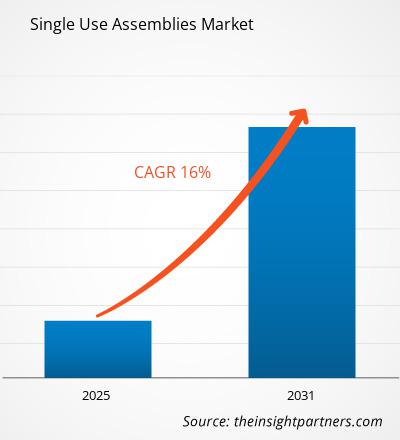Market Segmentation Defining Opportunities in the Ovarian Cancer Diagnostics Market
Segmentation within the Ovarian Cancer Diagnostics Market is providing key insights into the dynamics of this evolving industry. The market is divided based on diagnostic type, technology, end-users, and regional distribution. Among these, imaging diagnostics and biomarker-based assays hold the largest market share due to their precision and reliability. Hospitals and diagnostic centers remain the dominant end-users, but home-based testing solutions and tele-diagnostic services are becoming increasingly popular due to convenience and faster turnaround times.
Get Full Reports :https://www.marketresearchfuture.com/reports/ovarian-cancer-diagnostic-market-29373
The growing diversity of diagnostic categories ensures that manufacturers can tailor products to meet specific regional or clinical needs. As per Ovarian Cancer Diagnostics Market segment
, strategic segmentation is enabling stakeholders to identify the most lucrative opportunities and direct R&D investments accordingly. This structured approach supports innovation while enhancing patient-centric diagnostic solutions.
FAQs
Q1. What are the major segments in this market?
A1. Segments include imaging diagnostics, biomarker testing, molecular assays, hospitals, and laboratories.
Q2. Why is segmentation important in healthcare diagnostics?
A2. It helps businesses understand specific market needs and tailor technologies for targeted patient groups.
Related Reports :
https://www.marketresearchfuture.com/reports/private-nursing-services-market-32153
https://www.marketresearchfuture.com/reports/digital-dentistry-market-32324
https://www.marketresearchfuture.com/reports/chiropractic-care-market-32293
https://www.marketresearchfuture.com/reports/combat-dressing-market-32290
https://www.marketresearchfuture.com/reports/dementia-care-product-market-32344
Segmentation within the Ovarian Cancer Diagnostics Market is providing key insights into the dynamics of this evolving industry. The market is divided based on diagnostic type, technology, end-users, and regional distribution. Among these, imaging diagnostics and biomarker-based assays hold the largest market share due to their precision and reliability. Hospitals and diagnostic centers remain the dominant end-users, but home-based testing solutions and tele-diagnostic services are becoming increasingly popular due to convenience and faster turnaround times.
Get Full Reports :https://www.marketresearchfuture.com/reports/ovarian-cancer-diagnostic-market-29373
The growing diversity of diagnostic categories ensures that manufacturers can tailor products to meet specific regional or clinical needs. As per Ovarian Cancer Diagnostics Market segment
, strategic segmentation is enabling stakeholders to identify the most lucrative opportunities and direct R&D investments accordingly. This structured approach supports innovation while enhancing patient-centric diagnostic solutions.
FAQs
Q1. What are the major segments in this market?
A1. Segments include imaging diagnostics, biomarker testing, molecular assays, hospitals, and laboratories.
Q2. Why is segmentation important in healthcare diagnostics?
A2. It helps businesses understand specific market needs and tailor technologies for targeted patient groups.
Related Reports :
https://www.marketresearchfuture.com/reports/private-nursing-services-market-32153
https://www.marketresearchfuture.com/reports/digital-dentistry-market-32324
https://www.marketresearchfuture.com/reports/chiropractic-care-market-32293
https://www.marketresearchfuture.com/reports/combat-dressing-market-32290
https://www.marketresearchfuture.com/reports/dementia-care-product-market-32344
Market Segmentation Defining Opportunities in the Ovarian Cancer Diagnostics Market
Segmentation within the Ovarian Cancer Diagnostics Market is providing key insights into the dynamics of this evolving industry. The market is divided based on diagnostic type, technology, end-users, and regional distribution. Among these, imaging diagnostics and biomarker-based assays hold the largest market share due to their precision and reliability. Hospitals and diagnostic centers remain the dominant end-users, but home-based testing solutions and tele-diagnostic services are becoming increasingly popular due to convenience and faster turnaround times.
Get Full Reports :https://www.marketresearchfuture.com/reports/ovarian-cancer-diagnostic-market-29373
The growing diversity of diagnostic categories ensures that manufacturers can tailor products to meet specific regional or clinical needs. As per Ovarian Cancer Diagnostics Market segment
, strategic segmentation is enabling stakeholders to identify the most lucrative opportunities and direct R&D investments accordingly. This structured approach supports innovation while enhancing patient-centric diagnostic solutions.
FAQs
Q1. What are the major segments in this market?
A1. Segments include imaging diagnostics, biomarker testing, molecular assays, hospitals, and laboratories.
Q2. Why is segmentation important in healthcare diagnostics?
A2. It helps businesses understand specific market needs and tailor technologies for targeted patient groups.
Related Reports :
https://www.marketresearchfuture.com/reports/private-nursing-services-market-32153
https://www.marketresearchfuture.com/reports/digital-dentistry-market-32324
https://www.marketresearchfuture.com/reports/chiropractic-care-market-32293
https://www.marketresearchfuture.com/reports/combat-dressing-market-32290
https://www.marketresearchfuture.com/reports/dementia-care-product-market-32344
0 Reacties
0 aandelen
120 Views
0 voorbeeld


